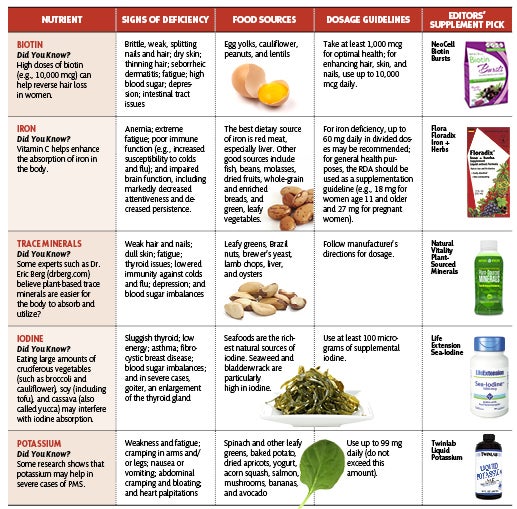A WOMEN’S BEST DIET
Listen to your body to develop your own personalized way of eating—and feel your best.
Get full access to Outside Learn, our online education hub featuring in-depth nutrition, fitness and adventure courses, and more than 2,000 instructional videos when you sign up for Outside+..
The mere mention of diets is so strongly associated with weight loss that a more basic fact is often overlooked. The right foods can help to rebalance hormones and relieve almost any ailment, from bloating, bad moods, and unpleasant monthly cycles to uncomfortable menopausal symptoms and assorted aches and pains. Any one of these, as well as excess weight, may simply be a symptom of eating the wrong foods.

On a positive note, eating in a way that suits your unique make-up can boost energy, reduce health risks, and keep you looking and feeling on top of your game. A leaner body can be a welcome side effect.
Developing your best way of eating takes a bit of research and planning, but it’s a worthwhile investment. Rather than viewing eating as a chore or stress reliever, consider meals as special events. After all, food is fuel that can enable your body to function and feel at its best, and the right meals can make each day more pleasant. On the flipside, eating food that doesn’t agree with you is like putting dirt in the gas tank of your car, but manifestations are not always obvious.
“A lot of hormone imbalance is inflammation and metabolic problems from food sensitivities,” says Tammy Post, DO, an integrative physician and founder of Project Fabulous (projectfabulous.com), a weight-loss program that addresses food intolerance and hormonal issues. Such sensitivities, or food intolerances, are immune-system reactions that can take hours or days to express themselves, making the connection difficult to detect.
Although each woman’s reaction is unique, there are some common foods that many of us have difficulty with, especially if they are eaten on a regular basis or in large amounts. Identifying your personal triggers and designing your own diet will give you the best results.
Know the Top Problem Foods
Post has found that four food types most often provoke inflammation, discomfort, and weight gain: gluten, added sugars and artificial sweeteners, soy, and dairy. To heal your system, she recommends avoiding all four for 21 to 28 days, especially if you need to lose a lot of weight, because the underlying inflammation prevents weight loss, as well as disrupting hormones.
Doing this is, in fact, a form of detoxification that calms inflammation and enables your body to reach a new, healthier state. Less often, says Post, corn or peanuts can also cause problems, and some people can’t tolerate eggs. Although not every woman suffers from an intolerance of one or more of these, anyone with hormonal, weight, mood, or other unwanted symptoms is likely to benefit from a food overhaul.
Go Naturally Gluten-Free
Since gluten is found in many processed and packaged foods beyond baked goods, including many salad dressings, soups, and sauces, it’s safest to stick with whole foods. Instead of grain-based foods with gluten, or gluten-free substitutes loaded with sugar and starch, opt for foods that naturally contain no gluten—all fresh vegetables, fruits, legumes, fish, organic or grass-fed poultry and meats, seeds, nuts, and unadulterated oils and coconut products.
If you desire substitutes for grain-based foods, try crackers made with seeds, nuts, and dehydrated vegetables. And nut, seed, or coconut flours can be used in baking. For ideas, search for flours and recipes at wheatbellyblog.com.
Become a Food Sleuth
Start by examining all the packagedfoods in your cupboards and fridge. Have a notebook and pen handy, or use your smartphone to take notes. Take out each food (including frozen and canned items), read all the ingredients, and write down the name of each product that contains any of the potentially problematic ingredients. Don’t overlook all the forms of added sugars, such as syrups from any source, and artificial sweeteners. Also note products with artificial flavors and preservatives, and hormones in conventional meat, poultry, and dairy products, since any type of toxin cancontribute to hormone disruption.
On your list, cross off anything you can realistically live without for the next 21–28 days. For each remaining item, find an alternative, preferably an organic version. One simple approach is to take the list to your local health food store or natural supermarket and find similar products without the unwanted ingredients. For example, nut, coconut, or hemp milks can replace cow’s milk, and herb and spice blends can replace sauces. Using fresh, instead of packaged food is ideal.
Develop a Plan
After abstaining for 3–4 weeks from potentially problematic foods, try introducing small quantities of one such food at a time, see how you feel during the next few days, and determine if you can tolerate it occasionally, in small quantities, or not at all. Repeat the process with the other foods, and find what works best—only you can tell.
Don’t Eat Like Your Man
Some women gain weight or start experiencing digestive or other symptoms when they begin to share life with a man because their eating habits become more like their mate’s. Aside from obvious gender differences, the authors of Eat Like
a Woman found scientific evidence that:
- Women take about 47 hours to digest their food, whereas men take about 33 hours.
- Women’s stomachs take an hour longer than men’s to empty.
- Compared to men, women’s bodies have more fat cells because they are designed to store more fat.
- Most often, women eat too much starch and not enough lean protein and non-starchy vegetables. And around a mate,it can become a habit to eat more, or more often, than a woman needs to. But it isn’t a requirement for a good relationship.
Five detoxifying foods
Celebrity nutritionist JJ Virgin, author of The Virgin Diet and The Virgin Diet Cookbook, points out that detoxification occurs in two phases. In phase 1, a fat-soluble toxin becomes water-soluble, and in phase 2, your body excretes the toxin via urine, sweat, and feces. However, without sufficient dietary protein, your liver can’t perform the second phase.
“Like Los Angeles rush hour traffic, those toxins just pile up and create a serious metabolic traffic jam,” says Virgin. To get enough protein, she recommends 4–6 ounces at each meal, from a lean source such as fish, poultry, or grass-fed beef, and if you’re athletic or have a larger frame, 6–8 ounces. Eating this way, you’re not likely to crave between-meal snacks.
These five foods, she says, are especially good at removing toxins while delivering a nutritional bonus:
Lemons
First thing in the morning, drink half a lemon squeezed into a glass of warm, filtered water. Lemon gives you a vitamin-C immune boost, and can help to rev up metabolism.
Asparagus
Green, white, or purple varieties act as a diuretic that helps cleanse your liver. Asparagus also has anti-inflammatory properties that help to improve arthritis and heart health, reduce risk for cancer, and might even relieve a hangover.
Cabbage
Like other cruciferous vegetables, cabbage is rich in sulfur, which helps the liver break down toxic substances, and its diuretic properties help to eliminate toxins, along with excess liquid that keeps you bloated.
Avocado
Besides being a healthy source of fat, fiber, and flavor, avocado provides glutathione, our body’s master antioxidant.
Broccoli
Another cruciferous vegetable, broccoli contains beneficial sulforaphane, which works with liver enzymes to detoxify and reduce risk for cancer. Not a fan? Try dunking small pieces (raw or steamed) in hummus, or lightly sautéing with a little freshly pressed garlic and coconut oil.

Food Intolerance and Testing
Unlike a classic food allergy—an immediate immune-system reaction that can be life-threatening—food intolerance is a delayed reaction of the immune system, during hours or days after eating an offending food. In conventional medicine, the mechanism is acknowledged, but its effects are believed to impact only the digestive system, manifesting as stomach pain, gas, or diarrhea, for example; testing for such reactions is viewed with skepticism.
However, holistic physicians and nutritionists often use blood or saliva tests to identify degrees of intolerance to various foods and design customized diets, which can produce dramatic results. Clinical experience, and data collected by labs that do such tests, show that food intolerances can manifest in many ways, including:
Anxiety
Bloating
Constipation
Diarrhea or soft stools
Elevated levels of the stress hormone cortisol
Fatigue or lack of energy
Gas
Headaches, including migraines
Heartburn
Inability to lose weight
Irritability
Joint pain, stiffness, or soreness
Menstrual problems
Mood problems or depression
Respiratory problems, such as asthma or sinus congestion
Skin disorders
Sleep difficulties
Thyroid malfunction
Unhealthy weight loss
Weight gain
Tests show degree of reaction to different foods, rather than a 100-percent positive or negative, so there’s an element of judgment in interpreting results to design a diet that is both practical and therapeutic. For example, if there is a slight intolerance of a food, learning to eat small amounts, occasionally, is likely a more realistic approach than trying to abstain from it for the rest of your life.
Tests can cost several hundred dollars and may not be covered by health insurance, but can be a useful tool. Labs generally don’t work directly with patients, so testing needs to be done with a health practitioner. To find one, check Health Resources at acam.org or the Provider Locator in patient resources at diagnostechs.com.
Amazing Wellness contributing editor Vera Tweed has been writing about nutrition, fitness, and healthy living since 1997. She specializes in covering research and expert knowledge that empowers people to lead better lives. Tweed lives in Los Angeles.